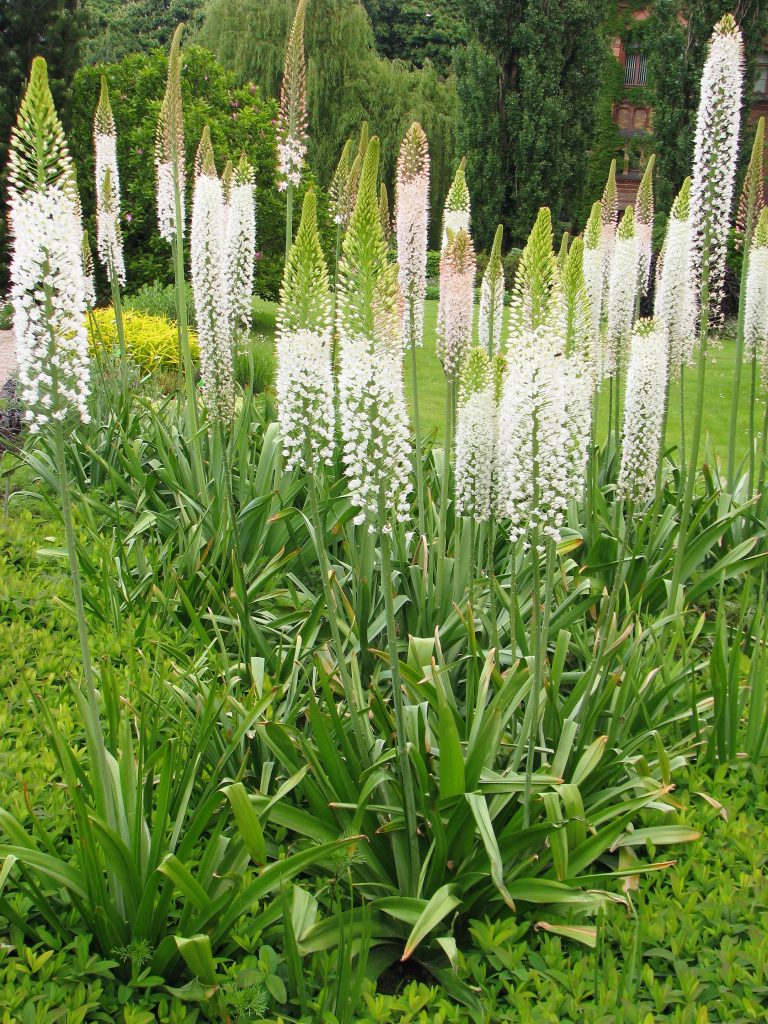
Also known as giant desert candle, this perennial bulb is native to central Asia and is a member of the Asphodelaceae family that also includes daylily (Hemerocallis), red hot poker (Kniphofia), and aloe (Aloe spp). With a starfish-like rootstock, the plants produce a basal clump of blue-green, strap-shaped leaves up to 4′ tall that dies down after flowering. From early to mid summer a leafless stem up to 10′ tall emerges carrying terminal racemes of up to 800 densely packed flowers that are attractive to butterflies and hummingbirds. Each fragrant flower is 1.5″ long, and has six pale pink, petal-like tepals and bright yellow stamens. The racemes open from the bottom to top over 3 weeks time and resemble foxtails or candles, giving rise to alternative common names. Foxtail lily is striking at the back of the border where it can provide a strong vertical accent in the garden. Plant in groups of five against a dark background for the most dramatic effect. The genus name, Eremurus, comes from the Greek words eremia meaning desert and oura meaning a tail, referring to the appearance of the flower spike. The specific epithet, robustus, is the Latin word meaning strong in grown.
Type: Perennial bulb
Bloom: Densely packed terminal racemes of tiny pale pink fragrant flowers from early to late summer
Size: 5-10′ H x 2-3′ W
Light: Full sun
Soil: Average, consistently moist especially when flowering, very well-drained; drought tolerant
Hardiness: Zones 5-8
Care: Plant at the back of the border with plants that will take the place of the withering foliage after flowering as the plants go into dormancy.
Pests and Diseases: Slugs, root rot in poorly drained soil
Propagation: Root division (include part of the crown), seed
Companion Plants:Lady’s mantle, catmint ‘Six Hills Giant, gladiolus
Outstanding Selections:
‘Romance’ (salmon pink flowers)
‘Foxtrot’ (pale pink flowers)
‘Pinokkio’ (hybrid, shorter than other varieties)
Photo Credit: Wikimedia Commons